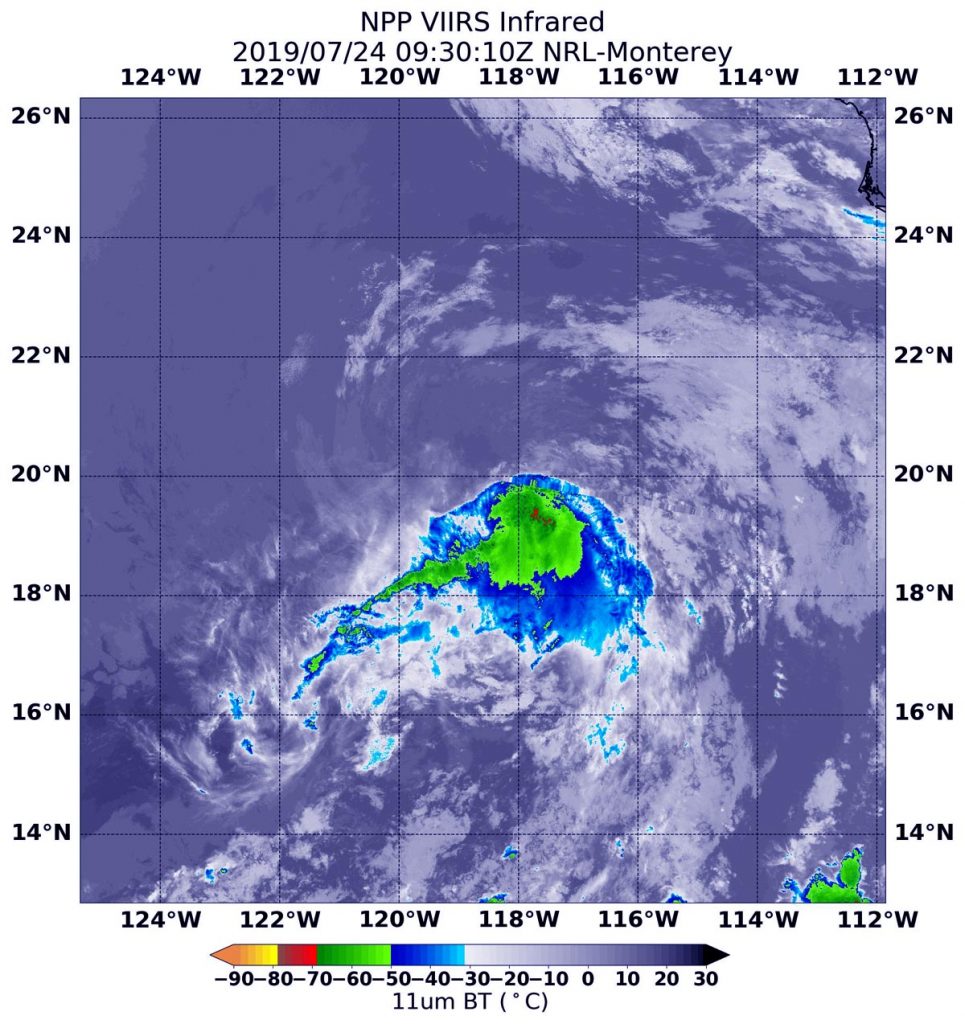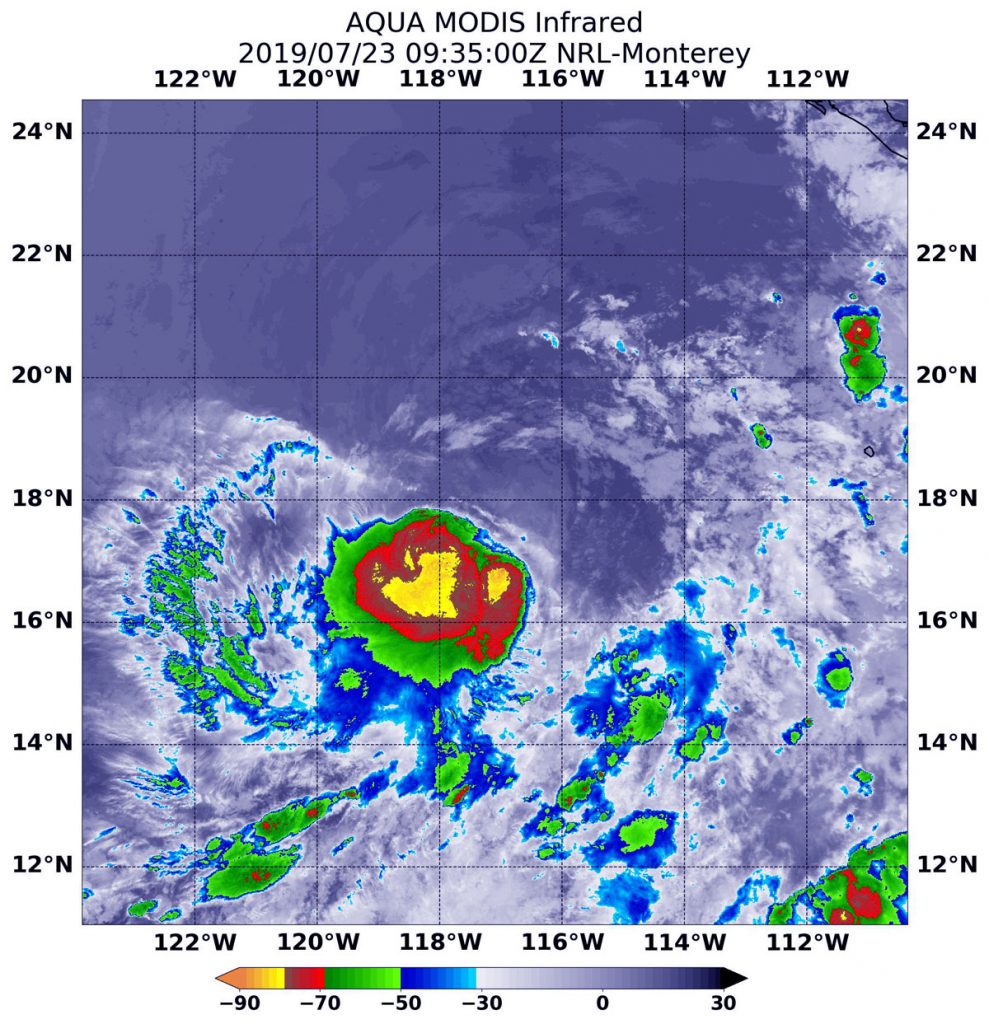July 25, 2019 – NASA Finds One Burst of Energy in Weakening Depression Dalila
Infrared imagery from NASA’s Aqua satellite found just a small area of cold clouds in thunderstorms within weakening Tropical Depression Dalila, enough to maintain it as a tropical cyclone.

NASA’s Aqua satellite uses infrared light to analyze the strength of storms by providing temperature information about the system’s clouds. The strongest thunderstorms that reach high into the atmosphere have the coldest cloud top temperatures.
On July 25 at 5:20 a.m. EDT (0920 UTC), the Moderate Imaging Spectroradiometer or MODIS instrument that flies aboard NASA’s Aqua satellite gathered infrared data on Dalila. There was still a small area of strong thunderstorms with cloud top temperatures as cold as minus 50 degrees Fahrenheit (minus 45.5 Celsius). The National Hurricane Center or NHC noted, “Dalila is still technically a tropical cyclone based on the development of new convection within 70-75 nautical miles northeast of the center.” That thunderstorm development was enough to maintain its classification as a tropical cyclone.
The NHC said, “At 5 a.m. EDT (0900 UTC), the center of Tropical Depression Dalila was located near latitude 21.6 degrees north and longitude 120.4 degrees west. That’s about 675 miles (1,090 km) west of the southern tip of Baja California, Mexico. The depression is moving toward the northwest near 6 mph (9 kph) and this motion is expected to continue this morning. The estimated minimum central pressure is 1009 millibars. Maximum sustained winds remain near 30 mph (45 kph) with higher gusts.
Weakening is forecast during the next couple of days, and Dalila is expected to become a post-tropical remnant low later today.
For updated forecasts, visit: https://www.nhc.noaa.gov
By Rob Gutro
NASA’s Goddard Space Flight Center



